Abstract
Immunological paralysis induced in adult guinea-pigs with various protein overloading treatments is specific only at the beginning and soon after the end of the paralysis-inducing treatment. Reported experiments show that during a period which starts between the 8th and 10th days of the paralysing treatment and finishes when this treatment is discontinued, there is established an unresponsiveness towards antigens unrelated to the paralysing one. This non-specific unresponsiveness is manifested by the inhibition of reactions of both immediate and delayed types of hypersensitivity, at least to certain antigens.
Full text
PDF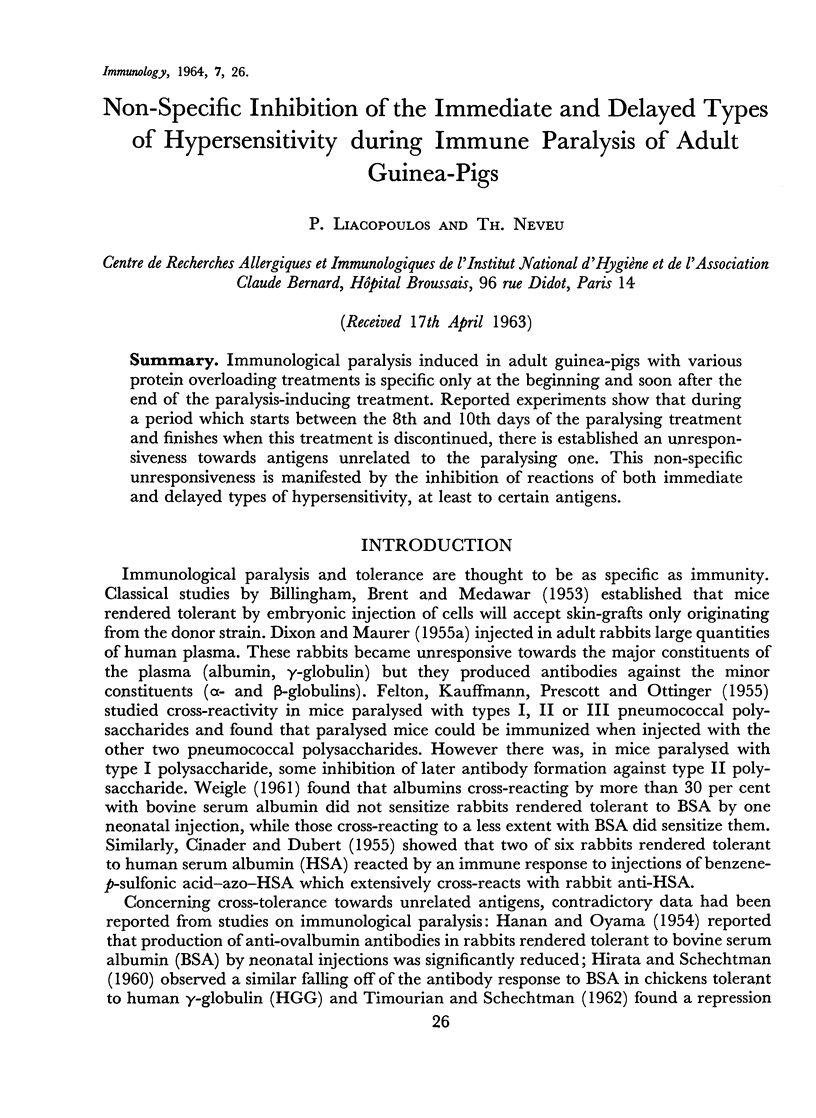
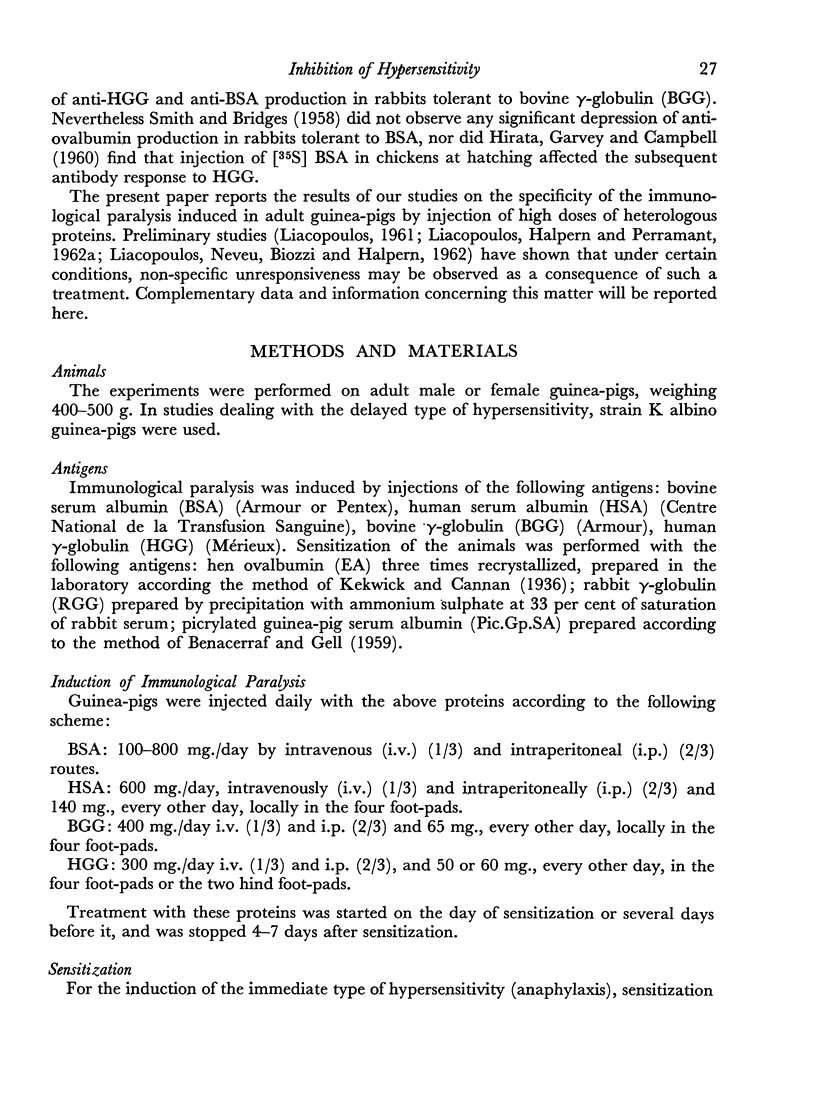
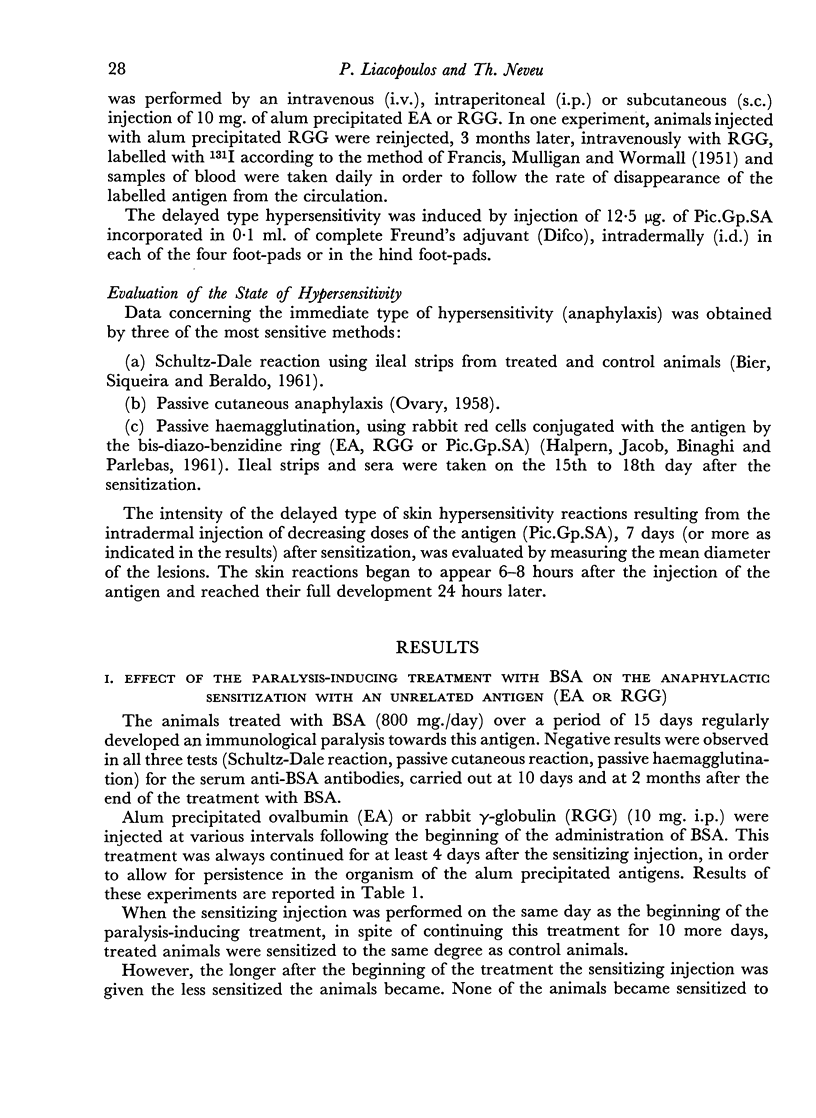
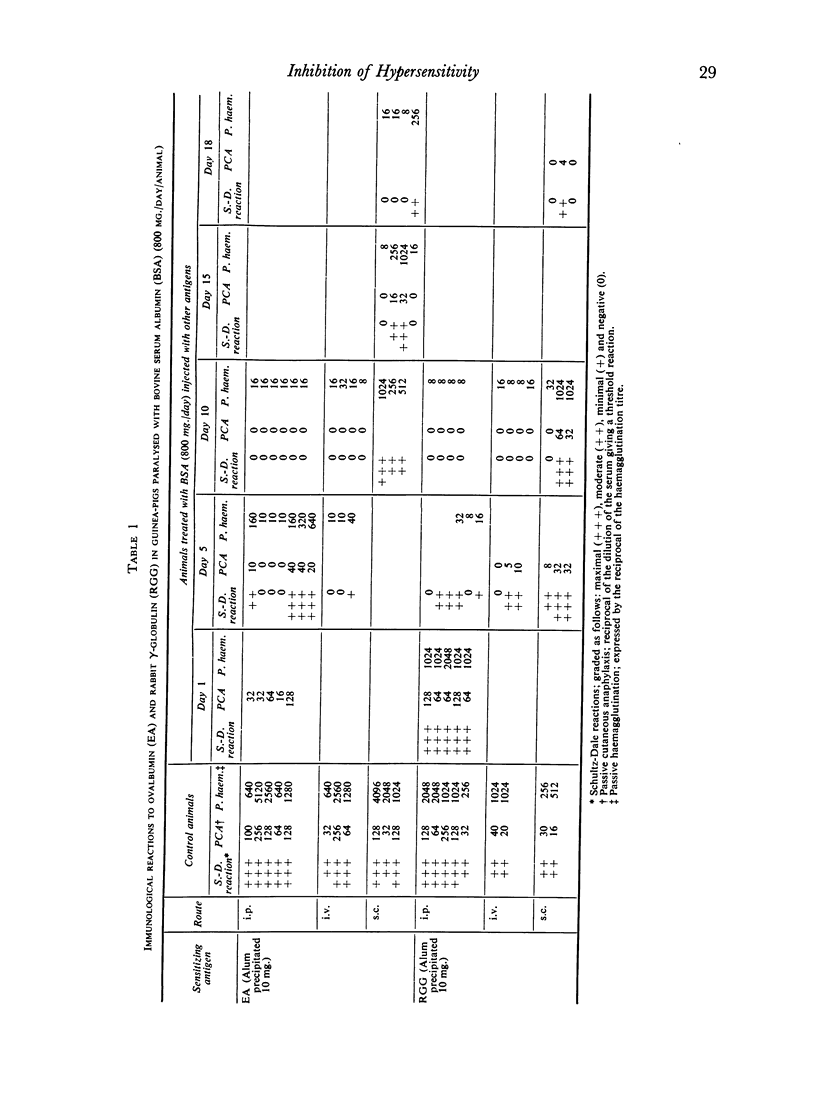
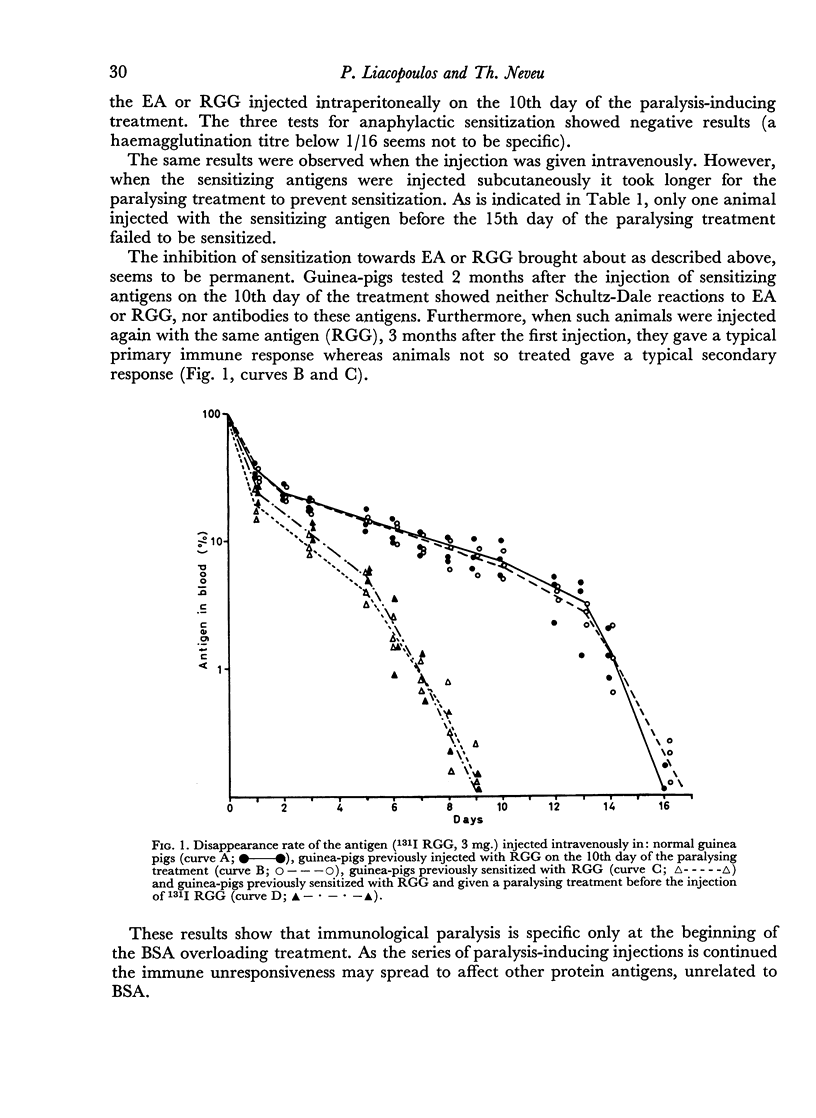
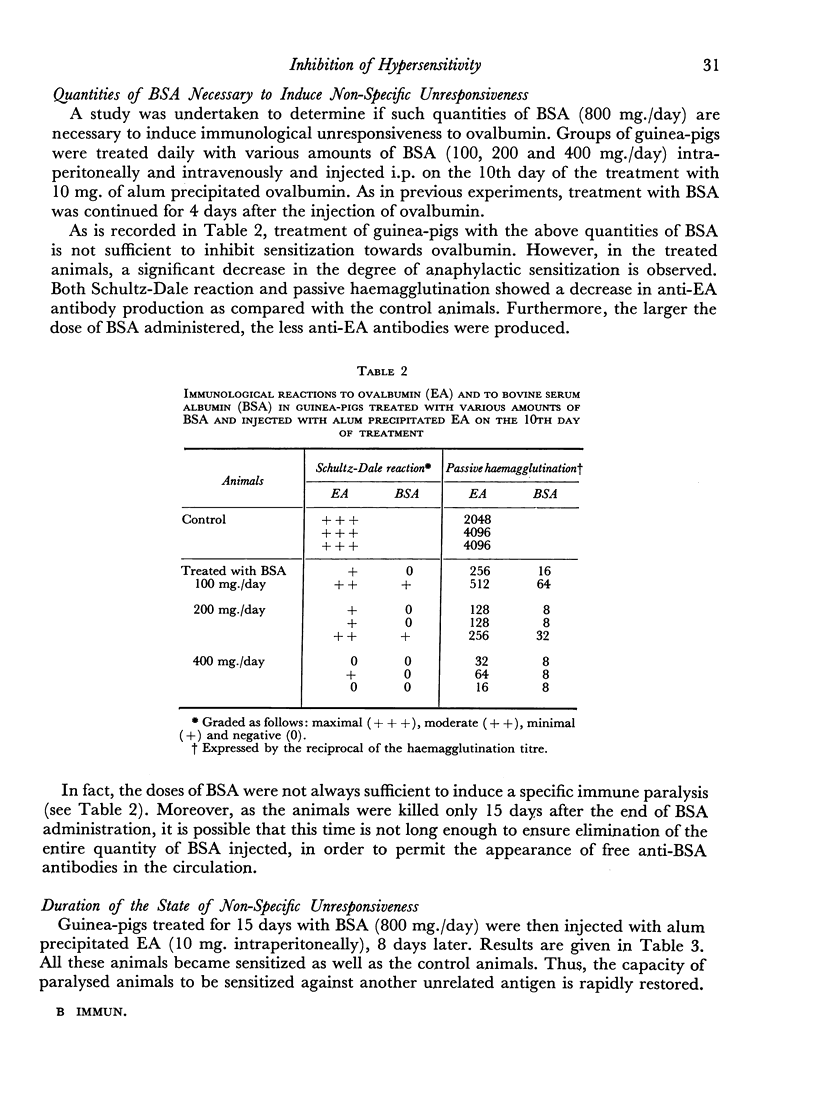
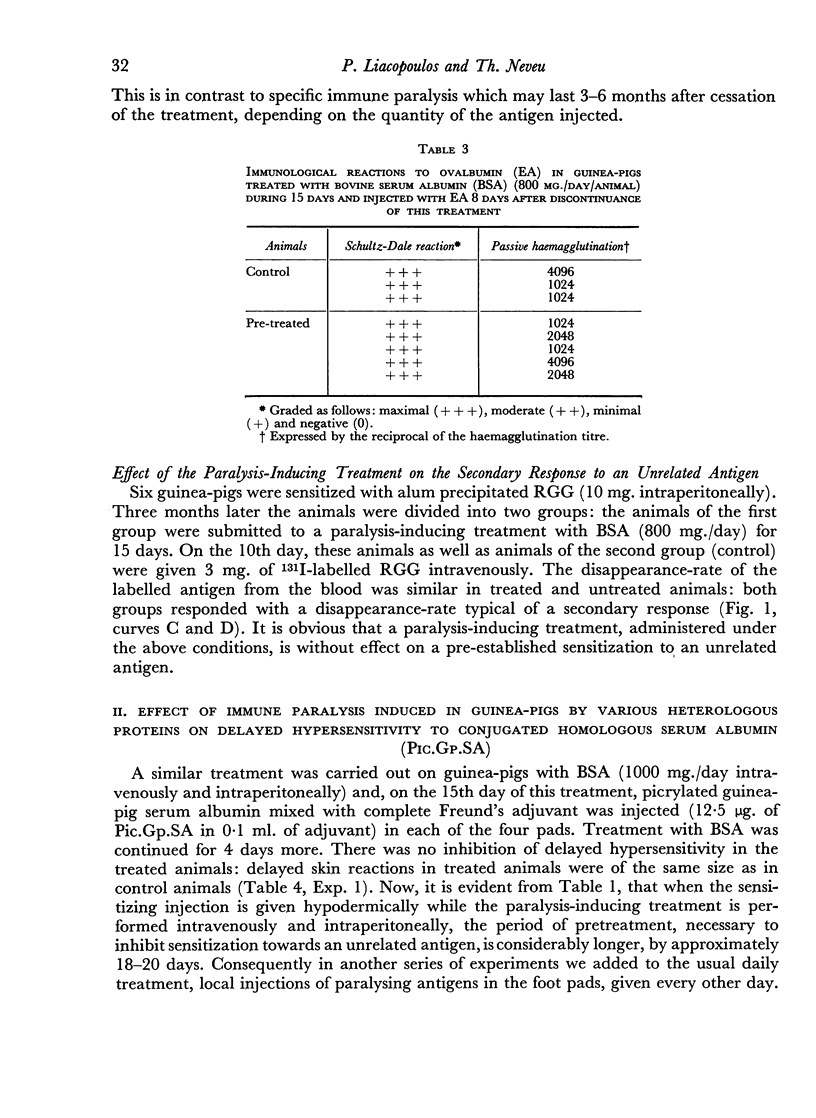
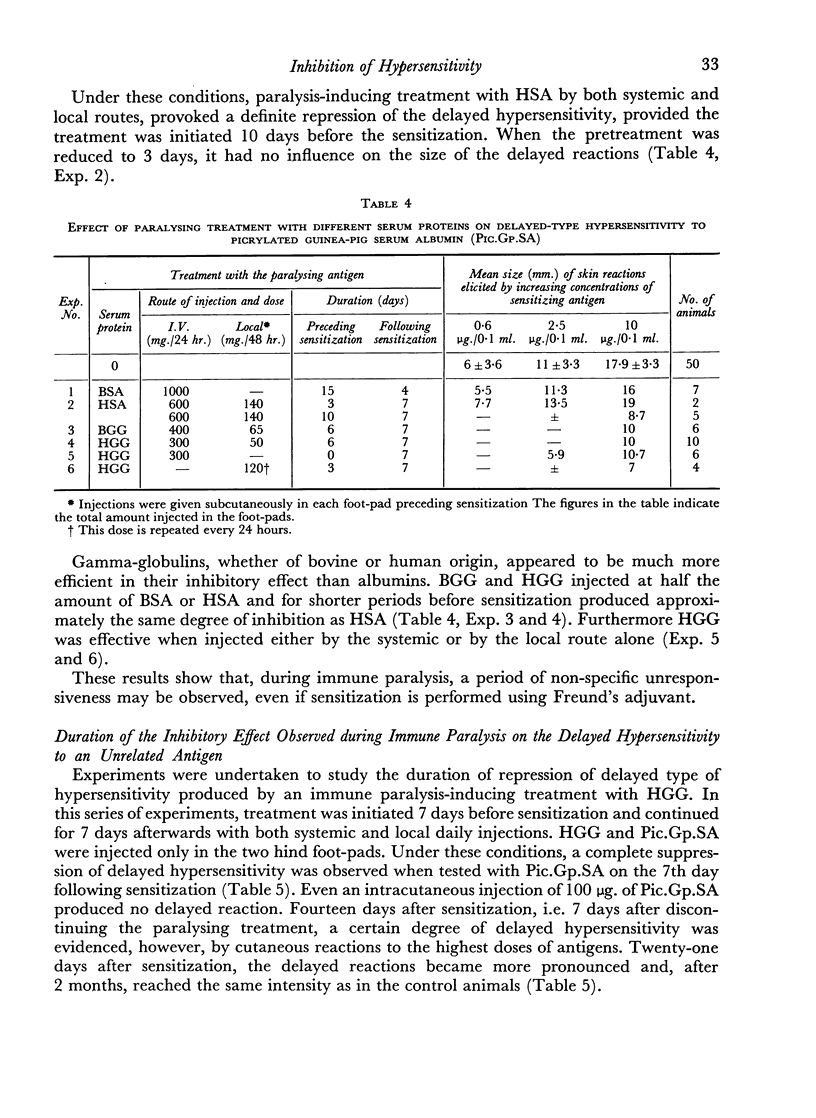
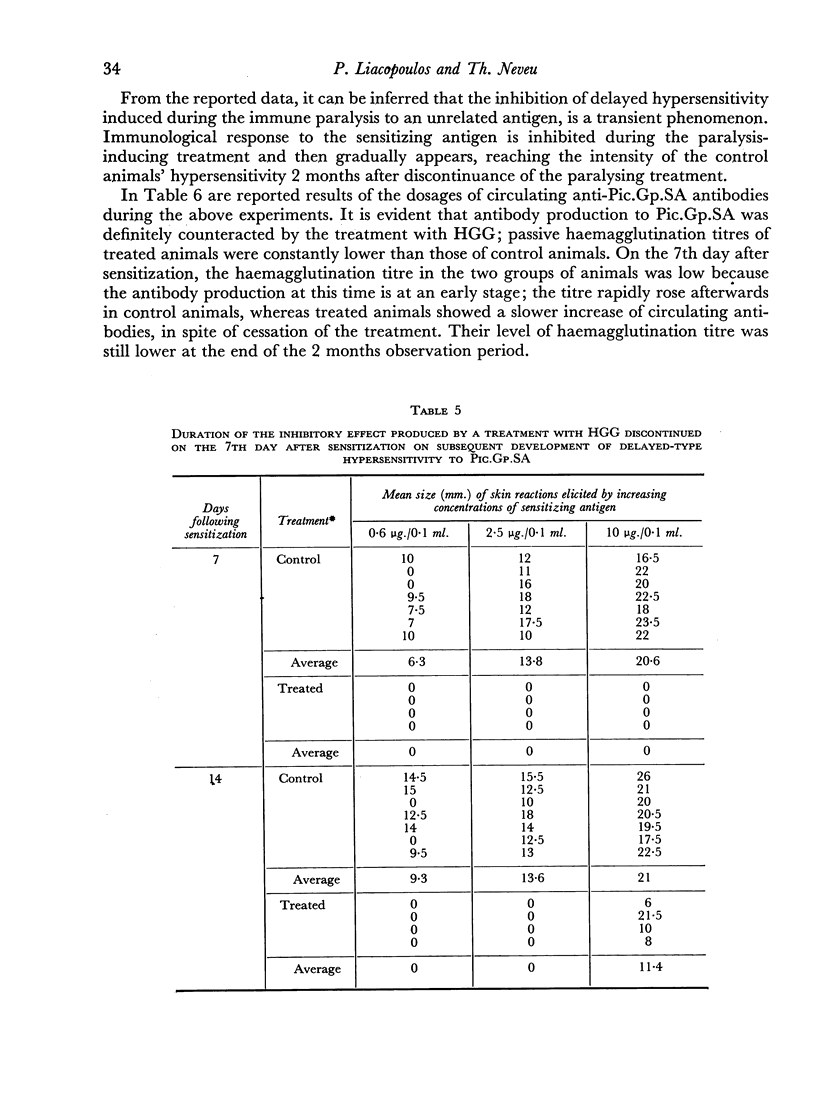
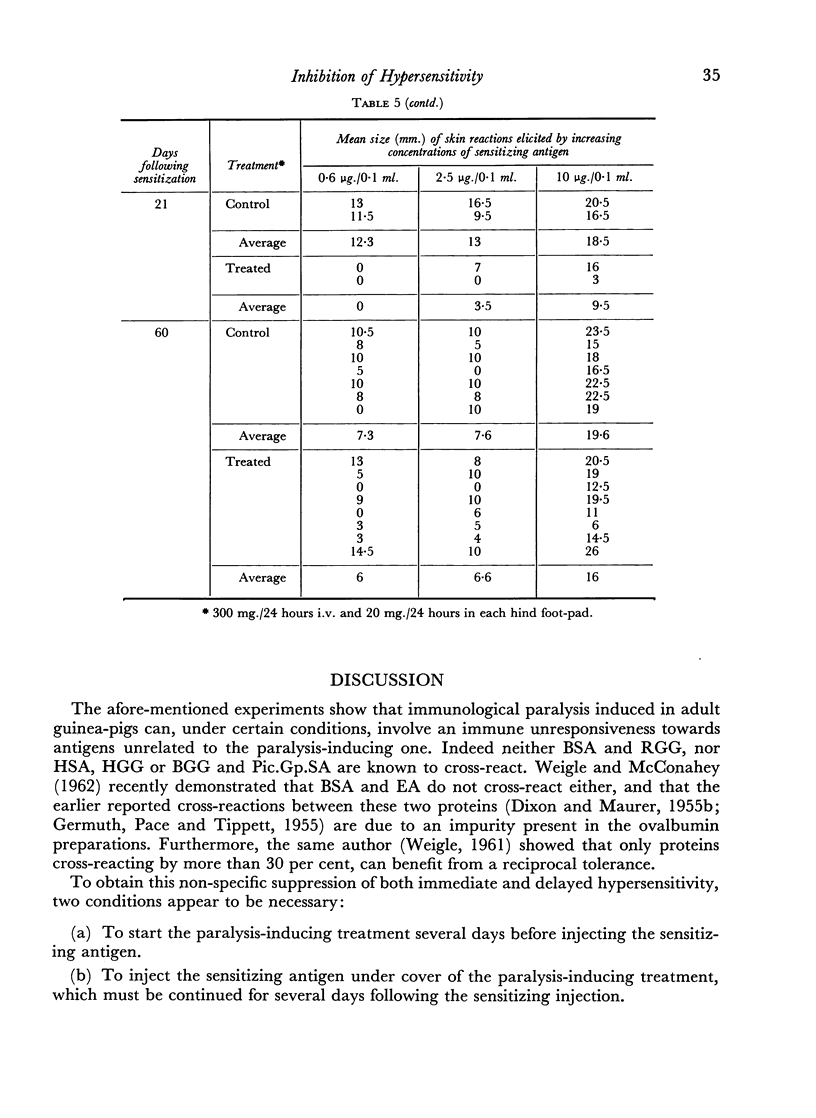

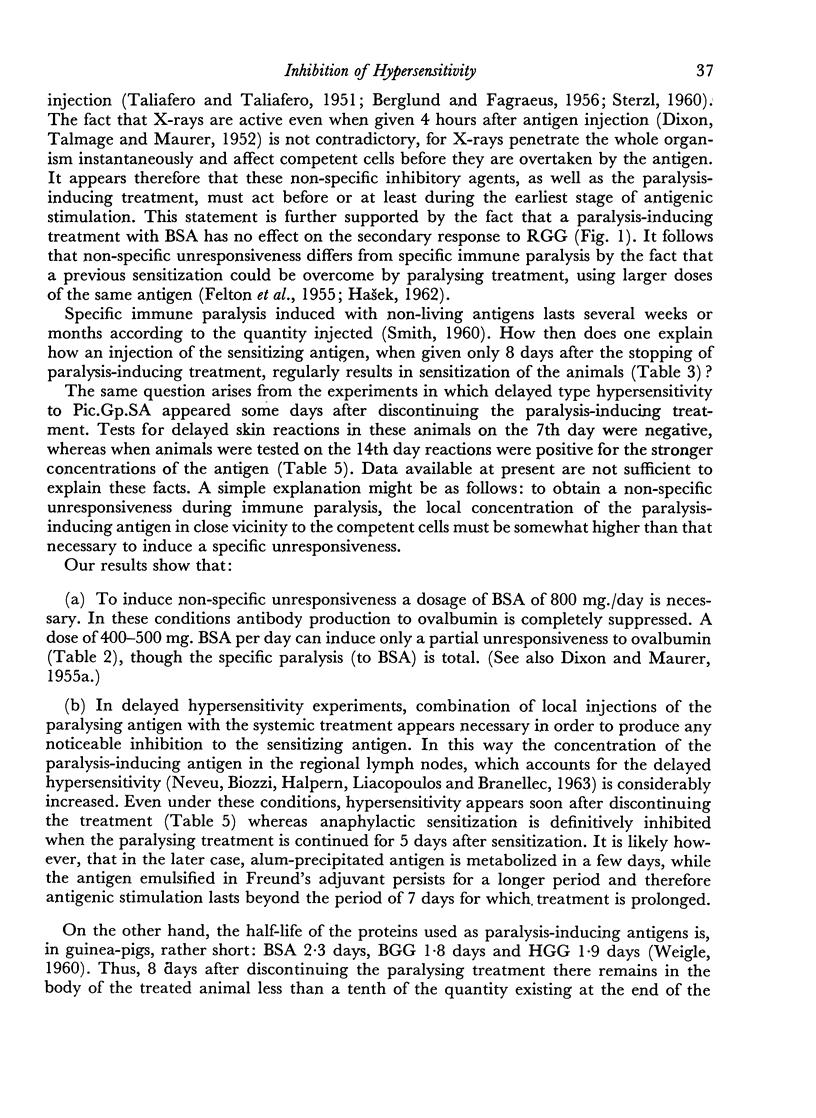
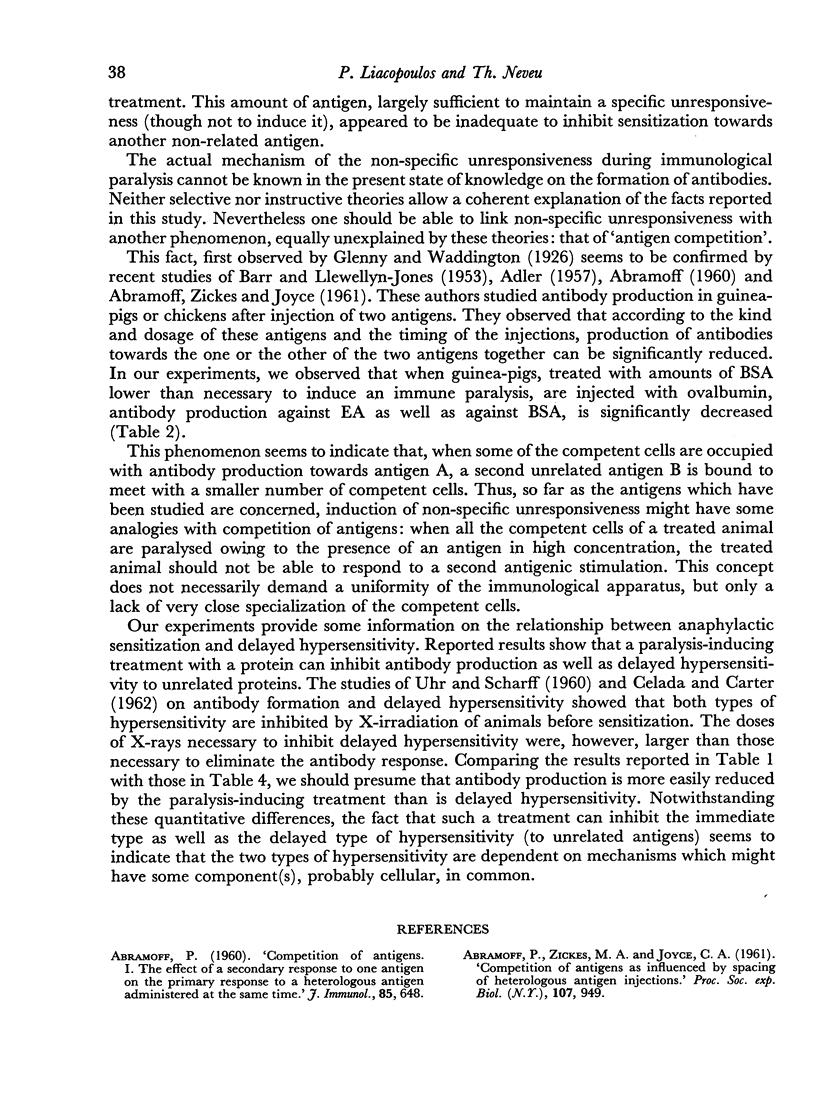
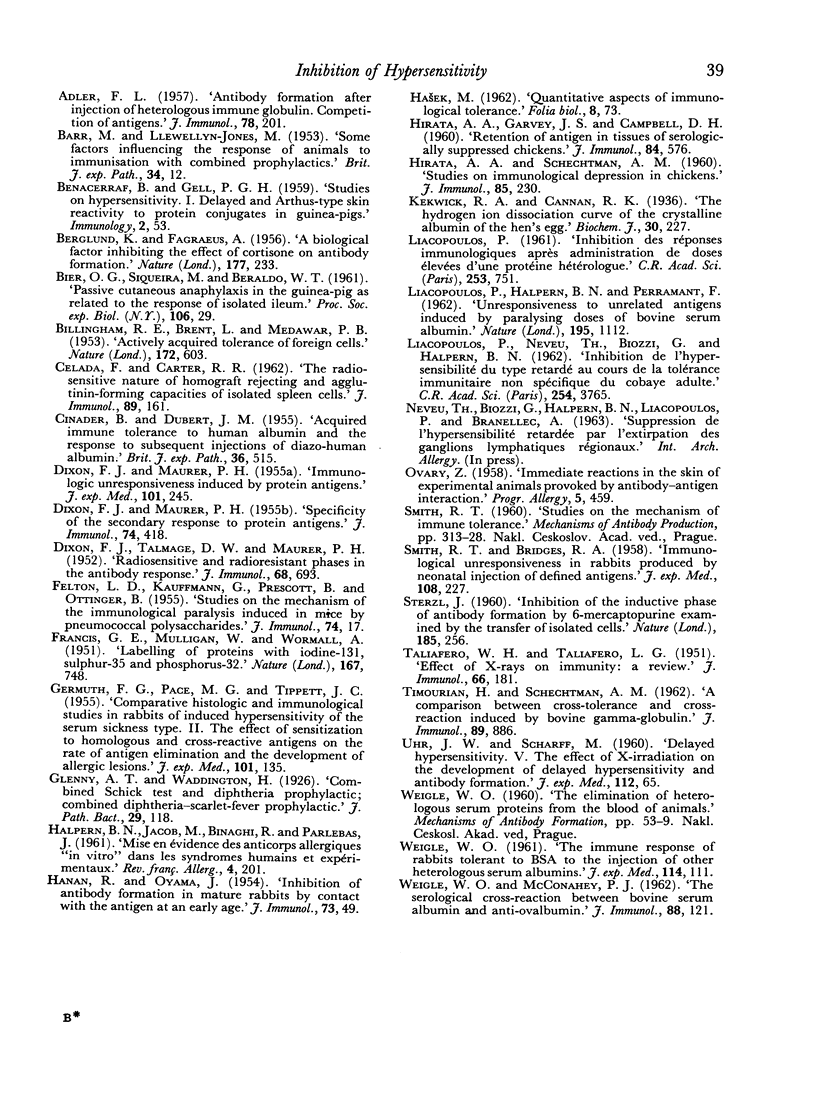
Selected References
These references are in PubMed. This may not be the complete list of references from this article.
- ABRAMOFF P. Competition of antigens. I. The effect of a secondary response to one antigen on the primary response to a heterologous antigen administered at the same time. J Immunol. 1960 Dec;85:648–655. [PubMed] [Google Scholar]
- ABRAMOFF P., ZICKES M. A., JOYCE C. A. Competition of antigens as influenced by spacing of heterologous antigen injections. Proc Soc Exp Biol Med. 1961 Aug-Sep;107:949–952. doi: 10.3181/00379727-107-26806. [DOI] [PubMed] [Google Scholar]
- ADLER F. L. Antibody formation after injection of heterologous immune globulin. II. Competition of antigens. J Immunol. 1957 Mar;78(3):201–210. [PubMed] [Google Scholar]
- BARR M., LLEWELLYN-JONES M. Some factors influencing the response of animals to immunisation with combined prophylactics. Br J Exp Pathol. 1953 Feb;34(1):12–22. [PMC free article] [PubMed] [Google Scholar]
- BENACERRAF B., GELL P. G. Studies on hypersensitivity. I. Delayed and Arthustype skin reactivity to protein conjugates in guinea pigs. Immunology. 1959 Jan;2(1):53–63. [PMC free article] [PubMed] [Google Scholar]
- BERGLUND K., FAGRAEUS A. A biological factor inhibiting the effect of cortisone on antibody formation. Nature. 1956 Feb 4;177(4501):233–234. doi: 10.1038/177233a0. [DOI] [PubMed] [Google Scholar]
- BILLINGHAM R. E., BRENT L., MEDAWAR P. B. Actively acquired tolerance of foreign cells. Nature. 1953 Oct 3;172(4379):603–606. doi: 10.1038/172603a0. [DOI] [PubMed] [Google Scholar]
- CELADA F., CARTER R. R. The radiosensitive nature of homograft-rejecting and agglutinin-forming capacities of isolated spleen cells. J Immunol. 1962 Aug;89:161–169. [PubMed] [Google Scholar]
- CINADER B., DUBERT J. M. Acquired immune tolerance to human albumin and the response to subsequent injections of diazo human albumin. Br J Exp Pathol. 1955 Oct;36(5):515–529. [PMC free article] [PubMed] [Google Scholar]
- DIXON F. J., MAUER P. H. Immunologic unresponsiveness induced by protein antigens. J Exp Med. 1955 Mar 1;101(3):245–257. doi: 10.1084/jem.101.3.245. [DOI] [PMC free article] [PubMed] [Google Scholar]
- DIXON F. J., MAURER P. H. Specificity of the secondary response to protein antigens. J Immunol. 1955 Jun;74(6):418–431. [PubMed] [Google Scholar]
- DIXON F. J., TALMAGE D. W., MAURER P. H. Radiosensitive and radioresistant phases in the antibody response. J Immunol. 1952 Jun;68(6):693–700. [PubMed] [Google Scholar]
- FELTON L. D., KAUFFMANN G., PRESCOTT B., OTTINGER B. Studies on the mechanism of the immunological paralysis induced in mice by pneumococcal polysaccharides. J Immunol. 1955 Jan;74(1):17–26. [PubMed] [Google Scholar]
- FRANCIS G. E., MULLIGAN W., WORMALL A. Labelling of proteins with iodine-131, sulphur-35 and phosphorus-32. Nature. 1951 May 12;167(4254):748–751. doi: 10.1038/167748a0. [DOI] [PubMed] [Google Scholar]
- GERMUTH F. G., PACE M. G., TIPPETT J. C. Comparative histologic and immunologic studies in rabbits of induced hypersensitivity of the serum sickness type. II. The effect of sensitization to homologous and cross-reactive antigens on the rate of antigen elimination and the development of allergic lesions. J Exp Med. 1955 Feb 1;101(2):135–150. doi: 10.1084/jem.101.2.135. [DOI] [PMC free article] [PubMed] [Google Scholar]
- HANAN R., OYAMA J. Inhibition of antibody formation in mature rabbits by contact with the antigen at an early age. J Immunol. 1954 Jul;73(1):49–53. [PubMed] [Google Scholar]
- HIRATA A. A., GARVEY J. S., CAMPBELL D. H. Retention of antigen in tissues of serologically suppressed chickens. J Immunol. 1960 Jun;84:576–581. [PubMed] [Google Scholar]
- HIRATA A. A., SCHECHTMAN A. M. Studies on immunologic depression in chickens. J Immunol. 1960 Sep;85:230–239. [PubMed] [Google Scholar]
- Kekwick R. A., Cannan R. K. The hydrogen ion dissociation curve of the crystalline albumin of the hen's egg. Biochem J. 1936 Feb;30(2):227–234. doi: 10.1042/bj0300227. [DOI] [PMC free article] [PubMed] [Google Scholar]
- LIACOPOULOS P., HALPERN B. N., PERRAMANT F. Unresponsiveness to unrelated antigens induced by paralysing doses of bovine serum albumin. Nature. 1962 Sep 15;195:1112–1113. doi: 10.1038/1951112a0. [DOI] [PubMed] [Google Scholar]
- LIACOPOULOS P., NEVEU T., BIOZZI G., HALPERN B. [Inhibition of the delayed type of hypersensitivity during non-specific immunological tolerance in adult guinea pigs]. C R Hebd Seances Acad Sci. 1962 May 21;254:3765–3767. [PubMed] [Google Scholar]
- LIACOPOULOS P. [Inhibition of immunological responses after administration of high doses of a heterologous protein]. C R Hebd Seances Acad Sci. 1961 Jul 24;253:751–753. [PubMed] [Google Scholar]
- OVARY Z. Immediate reactions in the skin of experimental animals provoked by antibody-antigen interaction. Prog Allergy. 1958;5:459–508. [PubMed] [Google Scholar]
- SMITH R. T., BRIDGES R. A. Immunological unresponsiveness in rabbits produced by neonatal injection of defined antigens. J Exp Med. 1958 Aug 1;108(2):227–250. doi: 10.1084/jem.108.2.227. [DOI] [PMC free article] [PubMed] [Google Scholar]
- STERZL J. Inhibition of the inductive phase of antibody formation by 6-mercaptopurine examined by the transfer of isolated cells. Nature. 1960 Jan 23;185:256–257. doi: 10.1038/185256a0. [DOI] [PubMed] [Google Scholar]
- TALIAFERRO W. H., TALIAFERRO L. G. Effect of x-rays on immunity; a review. J Immunol. 1951 Feb;66(2):181–212. [PubMed] [Google Scholar]
- TIMOURIAN H., SCHECHTMAN A. M. A comparison between cross-tolerance and cross-reaction. Induced by bovine gamma-globulin. J Immunol. 1962 Dec;89:886–890. [PubMed] [Google Scholar]
- UHR J. W., SCHARFF M. Delayed hypersensitivity. V. The effect of x-irradiation on the development of delayed hypersensitivity and antibody formation. J Exp Med. 1960 Jul 1;112:65–76. doi: 10.1084/jem.112.1.65. [DOI] [PMC free article] [PubMed] [Google Scholar]
- WEIGLE W. O., McCONAHEY P. J. The serological cross-reaction between bovine serum albumin and anti-ovalbumin. J Immunol. 1962 Jan;88:121–127. [PubMed] [Google Scholar]
- WEIGLE W. O. The immune response of rabbits tolerant to bovine serum albumin to the injection of other heterologous serum albumins. J Exp Med. 1961 Jul 1;114:111–125. doi: 10.1084/jem.114.1.111. [DOI] [PMC free article] [PubMed] [Google Scholar]


